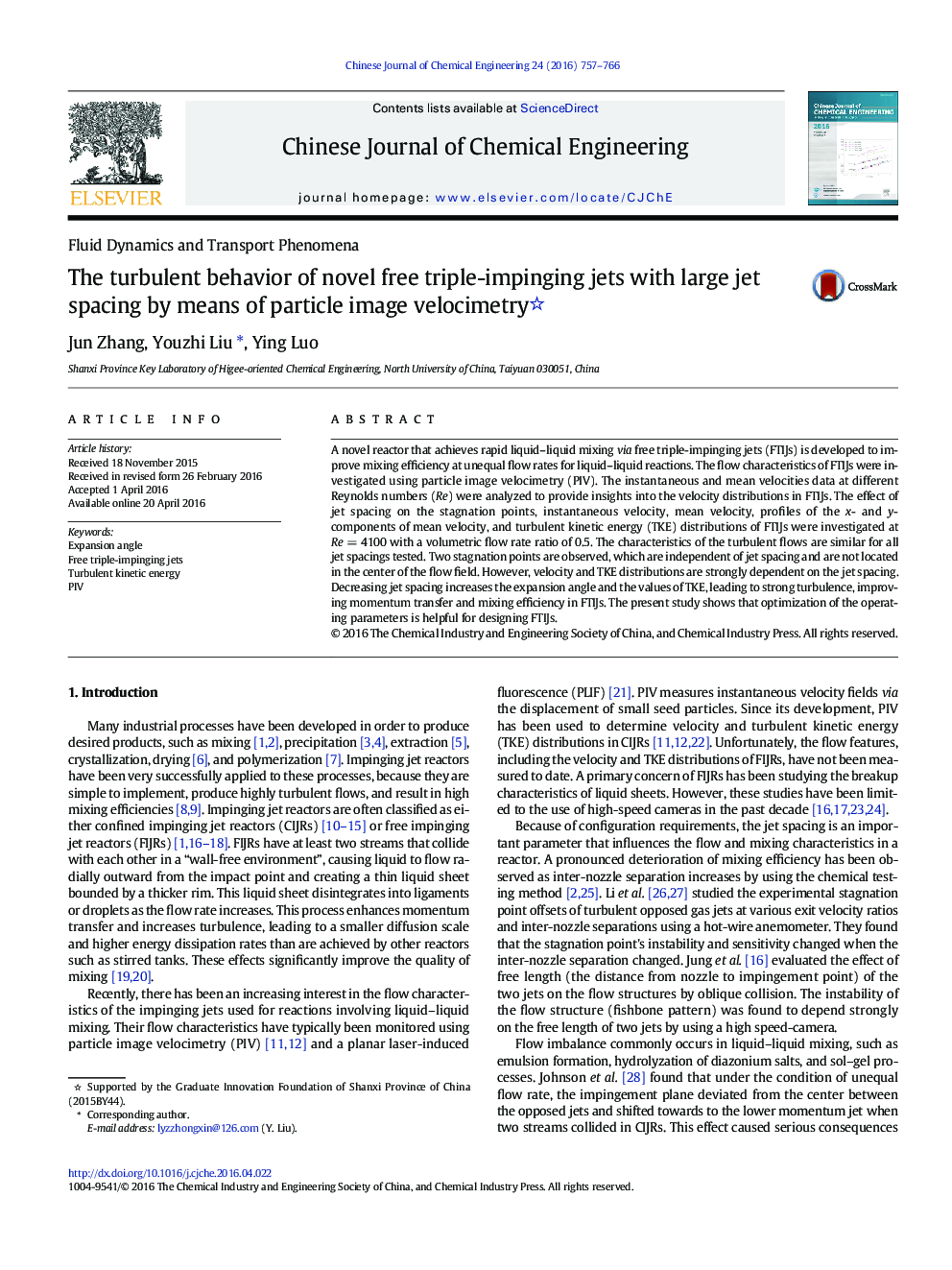| Article ID | Journal | Published Year | Pages | File Type |
|---|---|---|---|---|
| 167928 | Chinese Journal of Chemical Engineering | 2016 | 10 Pages |
A novel reactor that achieves rapid liquid–liquid mixing via free triple-impinging jets (FTIJs) is developed to improve mixing efficiency at unequal flow rates for liquid–liquid reactions. The flow characteristics of FTIJs were investigated using particle image velocimetry (PIV). The instantaneous and mean velocities data at different Reynolds numbers (Re) were analyzed to provide insights into the velocity distributions in FTIJs. The effect of jet spacing on the stagnation points, instantaneous velocity, mean velocity, profiles of the x- and y-components of mean velocity, and turbulent kinetic energy (TKE) distributions of FTIJs were investigated at Re = 4100 with a volumetric flow rate ratio of 0.5. The characteristics of the turbulent flows are similar for all jet spacings tested. Two stagnation points are observed, which are independent of jet spacing and are not located in the center of the flow field. However, velocity and TKE distributions are strongly dependent on the jet spacing. Decreasing jet spacing increases the expansion angle and the values of TKE, leading to strong turbulence, improving momentum transfer and mixing efficiency in FTIJs. The present study shows that optimization of the operating parameters is helpful for designing FTIJs.
Graphical abstractFree triple-impinging jets (FTIJs) are developed to improve mixing efficiency at unequal volumetric flow rates ratio for liquid–liquid reactions. At high Reynolds number and small jet spacing, the liquid undergoes intensified splashing, and flows radially outward from the impingement zone. The liquid velocities are distributed throughout the entire measurement region. Higher velocity results in a larger expansion angle of nearly 180°, which promotes liquid development and breakup, causes the liquid to become more unstable and turbulent. However, for larger jet spacing, the liquid needs a greater Reynolds number or higher velocity to attain the similar expansion angle and turbulence degree as small jet spacing.Figure optionsDownload full-size imageDownload as PowerPoint slide
